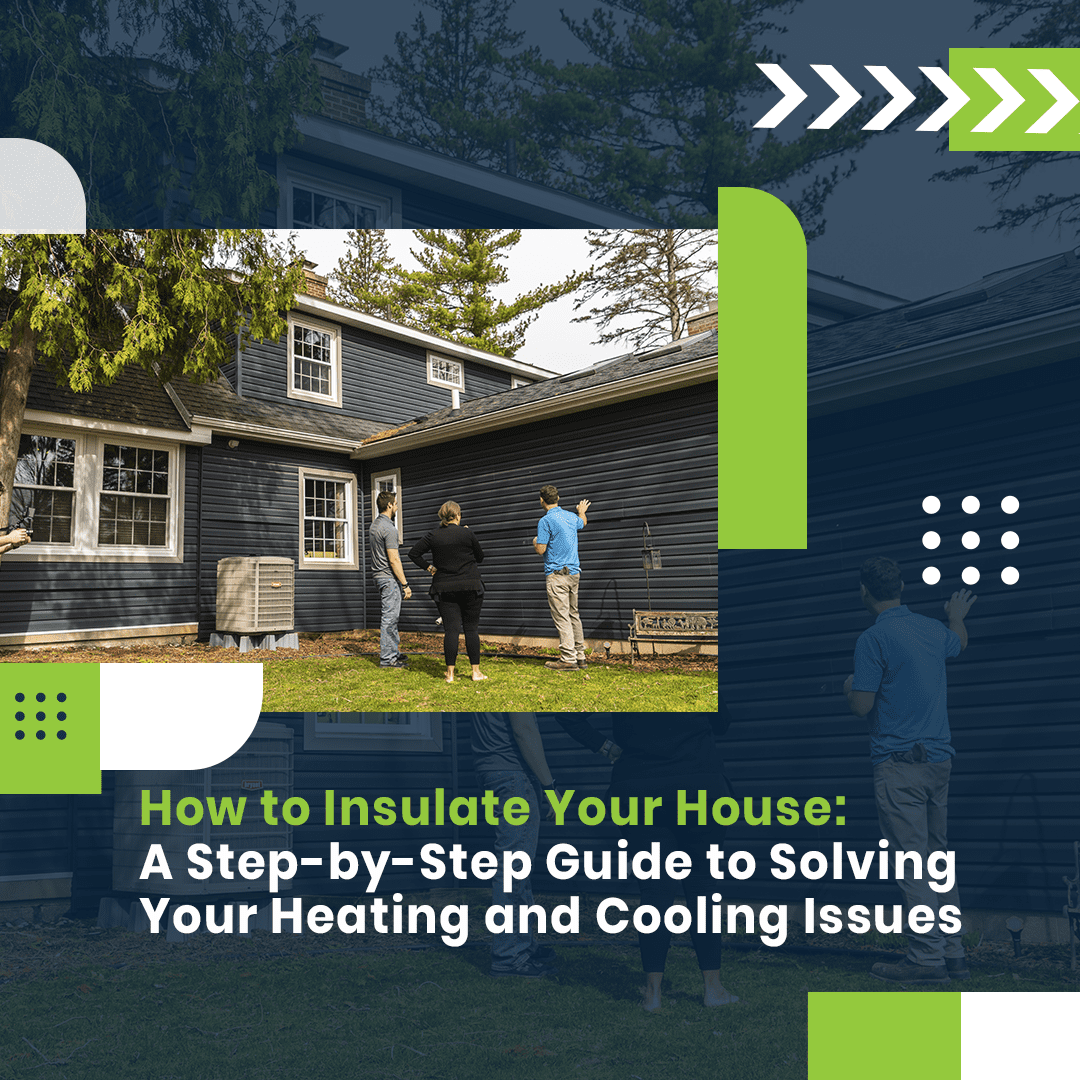
Guide steps in Solving Your Heating and Cooling Issues
Are you interested in finding a method to enhance the heating and cooling system that is currently installed in your home? You are in the proper location at this time. We have a detailed easy-to-follow tutorial on how you can accomplish this goal. We are here to assist individuals like you who are interested in enhancing the heating and cooling systems in their homes, which is precisely why we are here.
Investing a considerable amount of money into the heating and cooling of your home is a potentially significant investment, mainly when harsh weather conditions are present. Nonetheless, insulating your home is one strategy to cut down on the cost of these bills. The process of reducing heat transfer between your home's interior and your home's exterior is referred to as insulation. It accomplishes this by erecting a barrier that stops heat from circulating in one direction (out) and the other (in) during the winter and summer, respectively. The following blog post will present a detailed instruction guide on properly insulating your home.
Determine the Insulation Requirements for Your Home
The first thing you should do before beginning to insulate your house is to evaluate what kind of protection you require. This will be determined by some criteria, including the climate in your region, the age of your home, and the type of structure you have. An energy audit can help you find out where heat is escaping from your home and point you toward spaces that need to be insulated. You can also hire an expert to perform an energy audit on your home and make recommendations regarding the types of insulation that would work best.
Make Sure You Choose the Appropriate Insulation Material
After determining the required amount of insulation, the following step is to select the appropriate material for the insulation. Many different kinds of insulation materials are available, such as fiberglass, cellulose, and spray foam, amongst others. Because every material has unique benefits and drawbacks, you must pick one explicitly tailored to meet your requirements.
Homeowners often opt for fiberglass insulation due to its low cost, straightforward installation process, and high efficiency in preventing the movement of heat between spaces. Insulation manufactured from cellulose benefits the environment because it is produced from recycled materials. It is also valuable for controlling heat transfer, but a trained specialist must perform its installation. Spray foam insulation is the most effective method for limiting heat transfer but it also has the highest cost.
Seal Air Leaks
Sealing any air leaks in your home before continuing with the insulation process is crucial. Insulation can lose a substantial amount of its efficacy if air leaks, driving up your energy expenditures. Doors, windows, and electrical outlets are typical entry points for outside air penetrating a building. Caulking or weatherstripping can be used to seal these areas thoroughly.
Install insulation in the attic.
Insulating the attic is one of the most efficient ways to limit the amount of heat lost or gained in your home. Because heat travels upward, if your attic is not well insulated, the heat will rise to the roof and escape. You have the option of using either fiberglass batts or blown-in insulation to protect your attic space. You will need to take measurements of the area and cut the fiberglass batts to be the right size for the region. To install blown-in insulation, you will need to hire a blower and carefully follow the directions provided by the manufacturer.
Apply Insulation to the Walls
Insulating the walls is yet another efficient method for reducing the amount of heat that is transferred. You can protect the walls of your home that do not have insulation by blowing insulation into the wall cavity of your property that does not already have insulation. To complete this process, holes need to be drilled into the wall, and then an insulation blower needs to be used to pack the cavity with insulation.
Install Insulation in the Flooring
Insulating the floors is essential in any home, but it is especially crucial in ones with a crawlspace or basement. Installing batt insulation in the spaces between the floor joists is one method for insulating the flooring. You can choose to protect the walls of your crawlspace with either fiberglass batts or rigid foam insulation if it is the case that you have a crawlspace.
The ductwork should be insulated.
In conclusion, you just insulate your ducting. Your ducts can potentially lose a large quantity of heat if they are situated in a un climate-controlled area, such as an unheated attic or crawlspace. You can insulate the ductwork in your home by utilizing duct insulation sleeves or by wrapping the actual ducts in insulation. To prevent air from escaping via any cracks or seams, seal them with mastic or duct tape.
In conclusion, increasing the insulation in your home is an efficient strategy to lower the amount of money you spend on your monthly energy bills and increase the comfort level in your home. You can insulate your house and prevent the movement of heat between the inside and the outside of your house if you follow these measures.
Ready to book your free insulation evaluation?
We have 3 convienant ways for you to get in touch
We Provide Insulation Services to the Following Brighton Areas
BRIGHTON, HAMBURG, HARTLAND, HOWELL, PINCKNEY, WHITMORE LAKE
Counties Served
LIVINGSTON
Zip Code
48114, 48116, 48430, 48836, 48139, 48353, 48843, 48855, 48169, 48476, 48892, 48189
